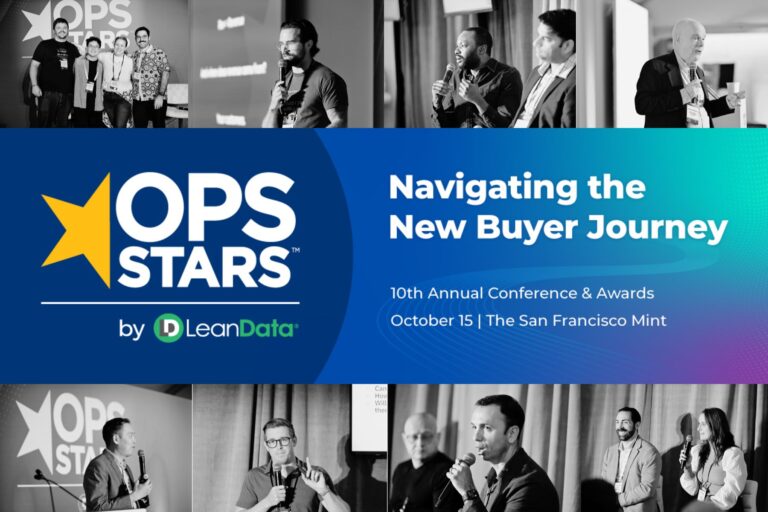There are a few dirty little secrets Salesforce administrators learn as they spend time building Salesforce flows. Make no mistake about it, Salesforce is an awesome solution. But, it does come with a few inherent challenges. Efficient, accurate lead routing (also known as lead assignment and lead distribution) is one issue that rises to the top of the list of challenges whenever a company’s revenue team grows to an even modest size and complexity.
What Causes Salesforce Flows to Falter?
Lead routing is a declarative feature in Salesforce. Thus, Salesforce administrators can build applications based on business rules and logic instead of writing code. However, its capabilities are not very robust. As an organization’s go-to-market (GTM) operations grow in both size and complexity, lead routing can become tremendously problematic.
The more complex your GTM flows and lead routing become, the less likely your Operations team can handle the situation without code in Salesforce.
However, solving for complexity isn’t the only challenge. Changes occur frequently, not only in the marketplace, but internally within the organization as well. Changes, and the flexibility to quickly respond to them, is yet another challenge.

Complexity Only Gets More … Complex
Growing complexity results in the extraordinarily arduous task of building (and maintaining) a Salesforce flow’s ruleset for handling the wide variety of relevant If/Then statements. Consider the following situation:
A newly-generated lead comes in, requiring a check to determine if it is associated with an account that already has a lead in the CRM and has already been assigned an owner. However, you need to ensure it’s an accurate match, especially if a company might have more than one name or domain suffix.
- If/Then: What if more than one company or account has a particular name?
- If/Then: What if the company or account name isn’t an exact match (e.g.; Inc., Incorporated, North America, etc.)?
- If/Then: What if a lead has a domain suffix of .com and there is already an owner for a lead with a domain suffix of .ca?
- If/Then: What if a lead has the same name, but a different email address?
- If/Then: What if a lead has the same email as another lead, but a different domain?
- Oh, and there’s more, right?
Once lead-to-account matching is effectively and accurately completed, you then need to route it to the best company representative.
- If/Then: What if it’s a new lead from an existing account? Should it go to a CSM (customer success manager) who owns the account or an SDR (sales development representative) who owns new leads from an existing territory?
- If/Then: What if the new lead works for a subsidiary that is based in a different country than the headquarters account already assigned to an SDR or CSM?
- If/Then: What if the new lead is from a country that has a different native language than the owner of the headquarters account?
- And, that’s just scratching the surface of a long set of possibilities

Routing to a Round Robin Pool
Having gone through the GTM logic and determined a lead should go to an SDR, the Ops team then decides to route the lead through a round robin pool.
- If/Then: What if one or more reps are out of the office, either short-term, like a medical appointment, or longer, like a vacation??
- If/Then: What if the work day for one or more of your reps has already ended?
- If/Then: What if your lead is inquiring about one particular product, service and needs particular expertise?
- If/Then: What if your lead has a particular language need?
Even for the smallest of revenue teams, lead routing can grow tremendously complex very quickly. To run efficiently, the RevOps team has to have a solution that works through complexity as its scope of operations scales and grows.
Of course, once a RevOps team solves for complexity, then comes the inevitable changes to the entire routing logic and structure.
Changes Require a Nimble, Agile Response
Any effective and efficient lead routing solution has to be flexible to adapt quickly — and relatively effortlessly — to the almost constant changes faced by the RevOps team.
Your Sales team will undoubtedly experience changes in both staffing and organization, often on a quarterly basis. Reps leave, and new representatives join the fold. Some reps are promoted or moved into new territories. Other reps change responsibilities to backfill those open positions, or new hires are brought in to fill the ensuing gaps.

Perhaps new products are introduced, requiring a new Sales team structure. Maybe there’s been a merger or acquisition. Or, the company expands into new, previously uncharted regions and territories, requiring a revamp of lead routing logic.
The point is that the revenue team and the marketplace for most organizations are far from static — they are fluid, dynamic and ever changing. Hardwiring a solution that is custom coded is something that works only for a moment, a snapshot in time. Soon, it becomes obsolete.
Fixing an obsolete lead routing system takes resources — time, energy and money.
So, what’s a Salesforce administrator and the RevOps team to do?

Solutions Abound on the AppExchange
Your Salesforce lead routing problems have already been solved, and the solutions are there for you to explore on the AppExchange. Now, as you can imagine, I’m partial to LeanData’s industry-leading lead-to-account matching and routing solutions. But, I won’t insult your intelligence by shamelessly shilling for my company’s products. Do a bit of exploratory research and you’ll undoubtedly discover the solution perfect for your needs.
Searching for a lead routing solution, you’ll run into a variety of consultants that will be willing to construct custom code for you. But, beware: custom code might work for what you’re experiencing today, but not what you’ll experience tomorrow, next month, next quarter, next year and the like.
In fact, in a dynamic marketplace with a rapidly growing — and changing — company, a custom-coded solution is often obsolete before it’s been completed and fully vetted.
Managed applications like LeanData’s are well-built, stable, and easy to deploy, maintain and update. The best of them — and please check out LeanData’s reviews on both AppExchange and G2 — simply work.
As you shop for a solution, be sure to use this handy Lead Routing Guide & Checklist.
You Don’t Need to Tread Alone
With the days of “growth at any cost” behind us, revenue teams are now tasked with pivoting into becoming efficient, lean, mean revenue-producing machines. Salesforce as a CRM is perfectly positioned to help in a great many regards. But, as we’ve shown, Salesforce flows have their limitations.
Lead routing becomes more and more problematic as companies grow. After all, isn’t that the point of revenue teams, to fuel a company’s growth? However, solving the problem requires investing in creating and maintaining a custom solution or utilizing a managed application.
When you thoroughly evaluate the choices, there’s really just one way to go when your GTM motions have brought your SFDC flows to their knees.










